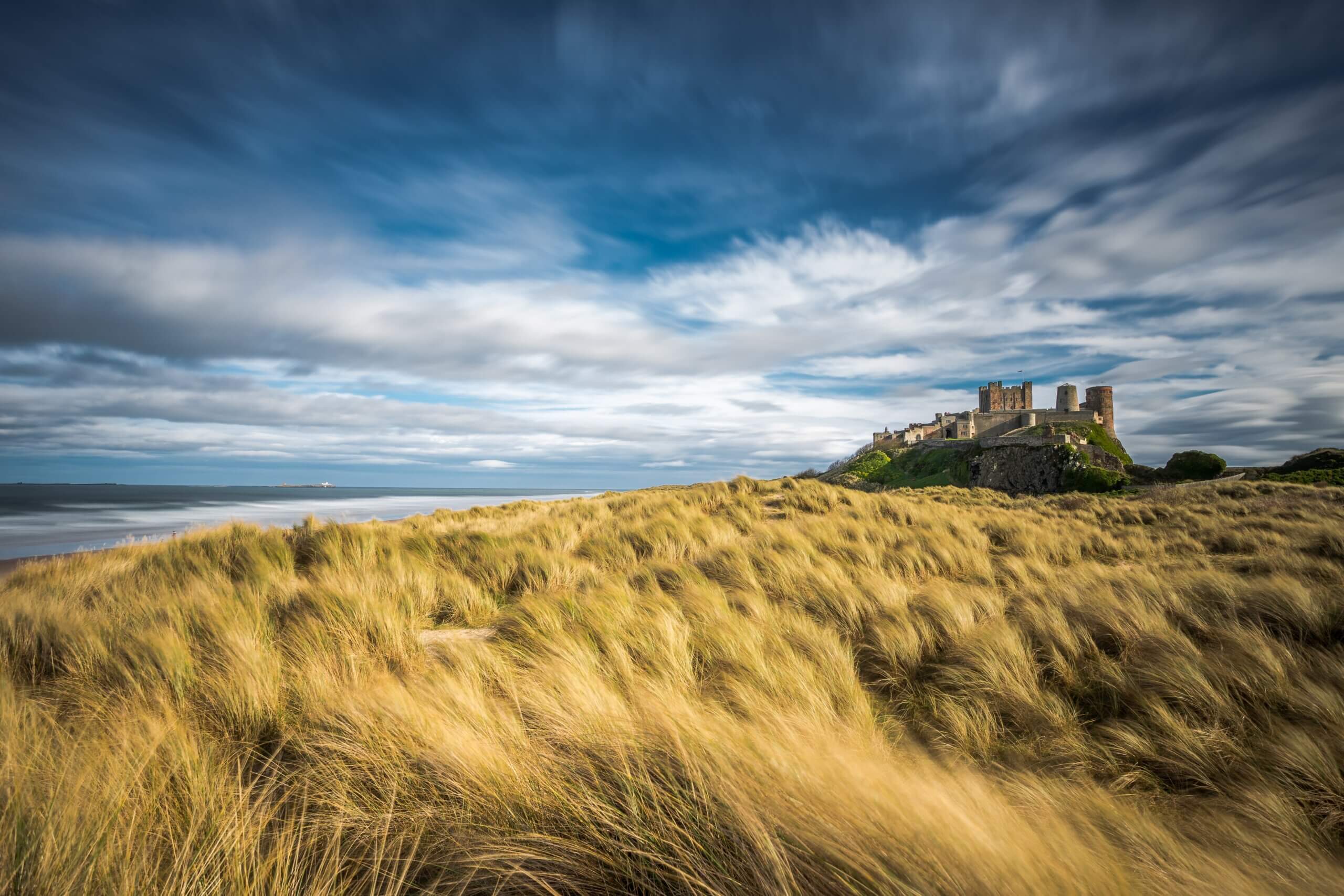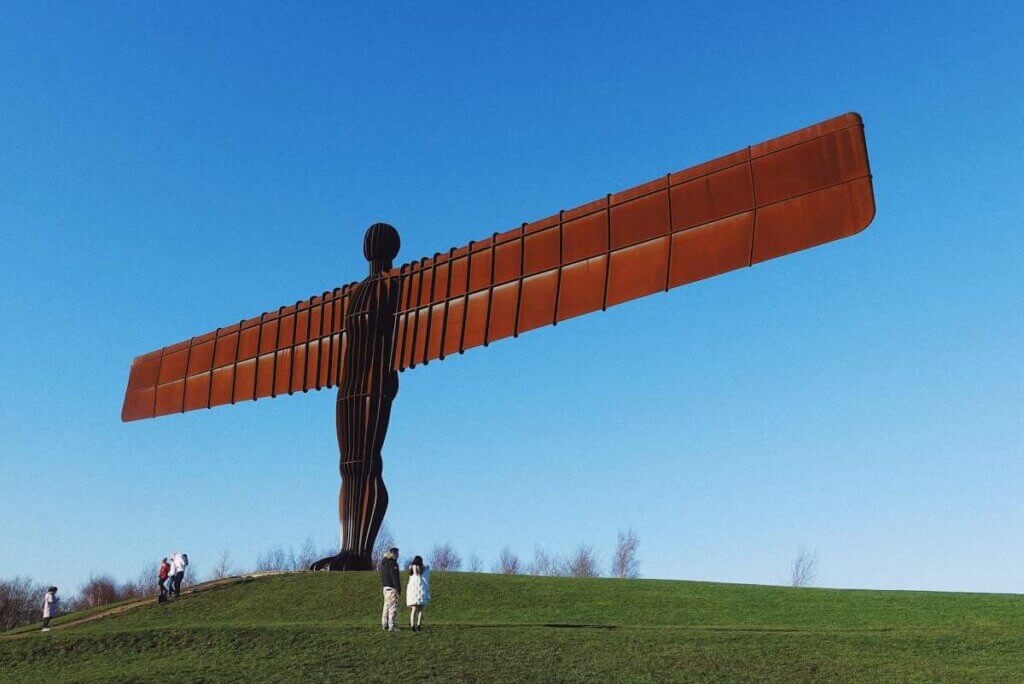*FYI - this post may contain affiliate links, which means we earn a commission at no extra cost to you if you purchase from them. Also, as an Amazon Associate I earn from qualifying purchases. Check out our Privacy Policy and Disclosure for more info.
From the city of Newcastle to the Scottish Borders, those looking for places to visit in North East England are spoiled for choice.
Along with its stunning natural beauty, North East England is most known for its history, with remnants of Roman and Viking influences still to be found today.
Since it’s located on the Scottish border, there have been times when the border shifted and the region fell to Scottish rule as well.
In this post, we’ll be sharing our top picks for places to visit in North East England, including some of the most stunning castles and natural highlights.
We hope you enjoy learning about this sparsely populated but beautiful region and be sure to let us know in the comments which North East England must-sees we should add to our list!
Alnwick Castle
Probably most famous as a location for film and television, Alnwick Castle is the seat of the 12th Duke of Northumberland, but also open to the public to visit.
It’s a Grade 1 Listed building, with its stunning formal gardens as popular with visitors as the castle/country house. While the Duke of Northumberland and his family live in part of the castle, most of it is open to the public, making it the second largest inhabited castle in England (after Windsor Castle).
Alnwick Castle was used for many scenes at Hogwarts in the first two Harry Potter films, and has also appeared in numerous other television series’ and films, including Downton Abbey.
There are three on-site museums at the castle, with different exhibitions all about the history of the area and castle. Harry Potter fans can take part in free Broomstick Training sessions and there are plenty of other fun activities available for children, or those who are just young at heart!
PRACTICAL INFORMATION FOR VISITING: The castle closes for the winter season around October, and usually reopens towards the ends of March. The gardens are open year-round.
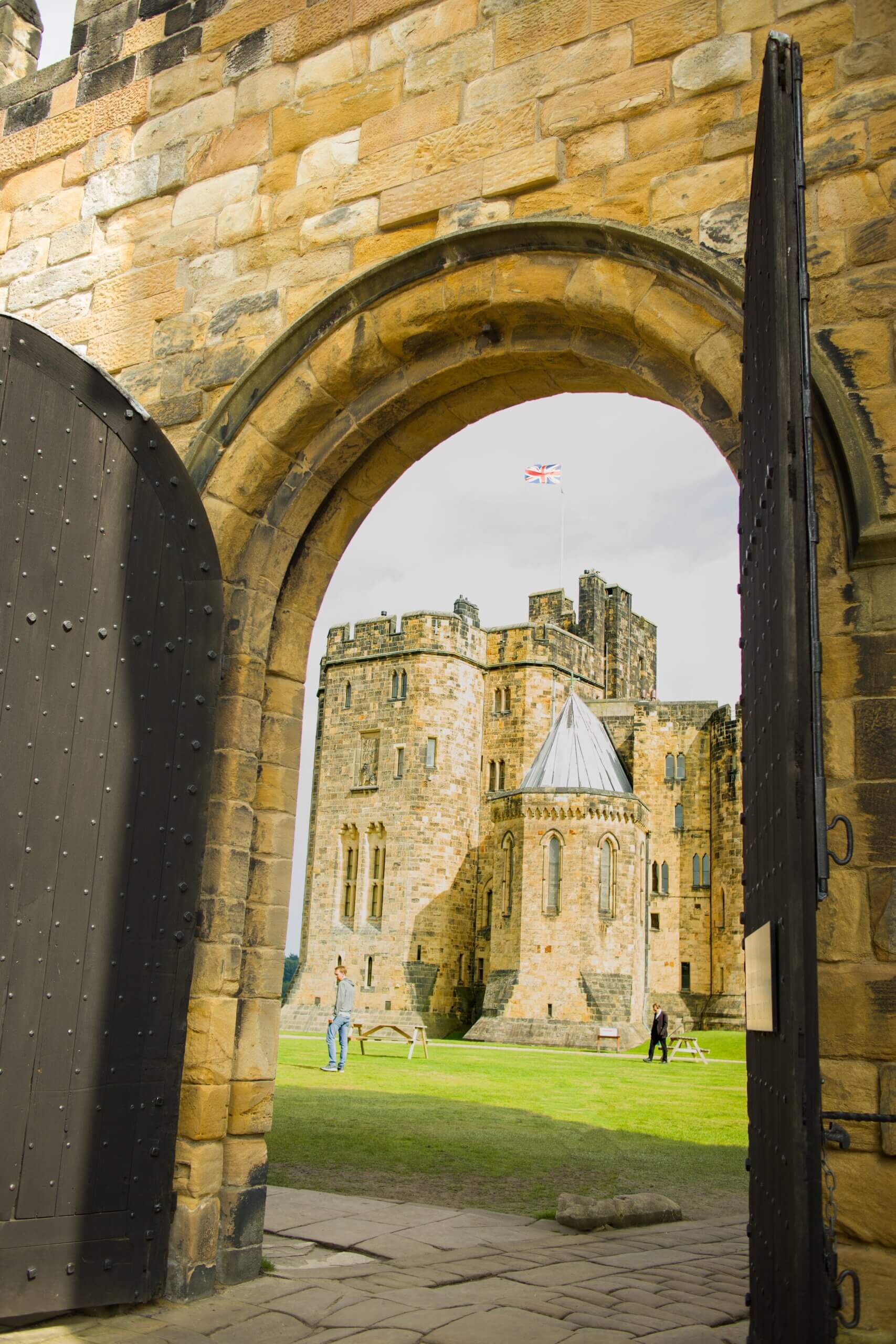
Durham
Home to both the Durham Cathedral and Durham Castle (which, in turn houses a university college!) , the city of Durham is a beautiful location looped around by the River Wear, and one of the most famous North East England attractions.
Durham Cathedral, (full name The Cathedral Church of Christ, Blessed Mary the Virgin and St. Cuthbert of Durham – now that’s a mouthful!) is a stunning example of Norman architecture and, together with Durham Castle, a UNESCO World Heritage Site.
The cathedral was also another famous site used for filming in the Harry Potter films, and the interior was also used for scenes in Asgard in Avengers: Endgame.
While the cathedral and castle get most of the fuss, the rest of the town is also beautiful and well worth a wander around to look at the shops, cafés, pubs and picturesque parks.
PRACTICAL INFORMATION FOR VISITING: You can only visit the castle as part of a guided tour, since it’s a working building and home to many students. Durham Cathedral is open most days for visitors and sermons, but make sure you check their website as sometimes the Cathedral is closed for university ceremonies.
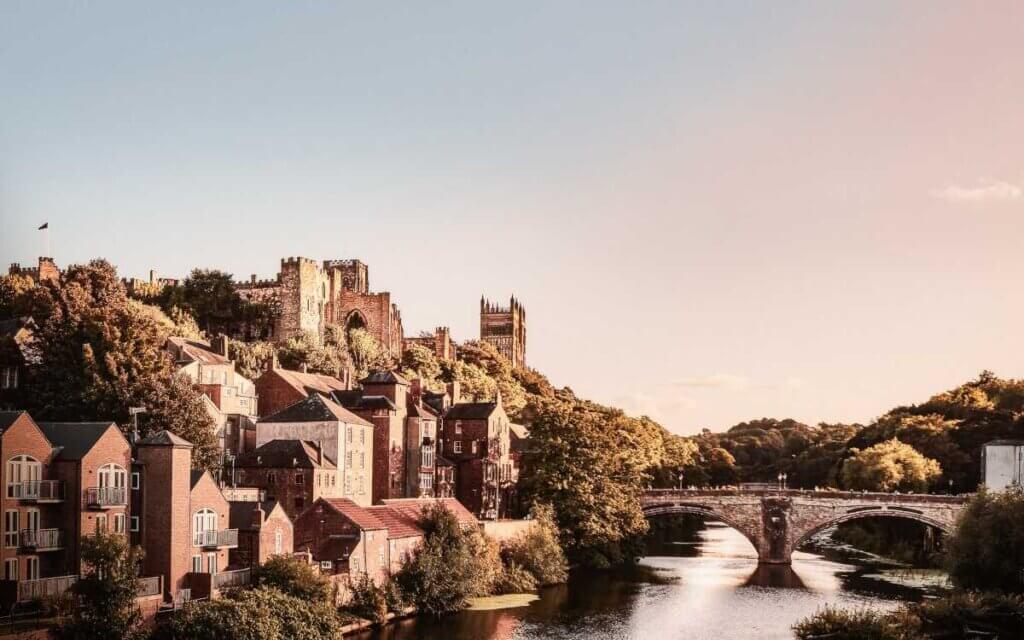
Bamburgh Castle
Yes, it’s another castle, but since North East England was so important for defense, there are quite a few stunning ones worth visiting! After passing from Briton and Anglo-Saxon hands many times over the years, the original Celtic fort was destroyed by the Vikings in 993, then rebuilt by the Normans.
The castle was eventually bought by the Victorian-era industrialist Baron William George Armstrong in 1894, and while it’s still owned by the Armstrong family today, it is also open to the public.
It’s a very impressive castle, sitting on a dolerite outcrop next to the Bamburgh Beach, so you can get stunning photos of the castle without actually going in. But we do advise going in, so you can also enjoy the views from the castle, as well as explore the staterooms, museums and other epic displays.
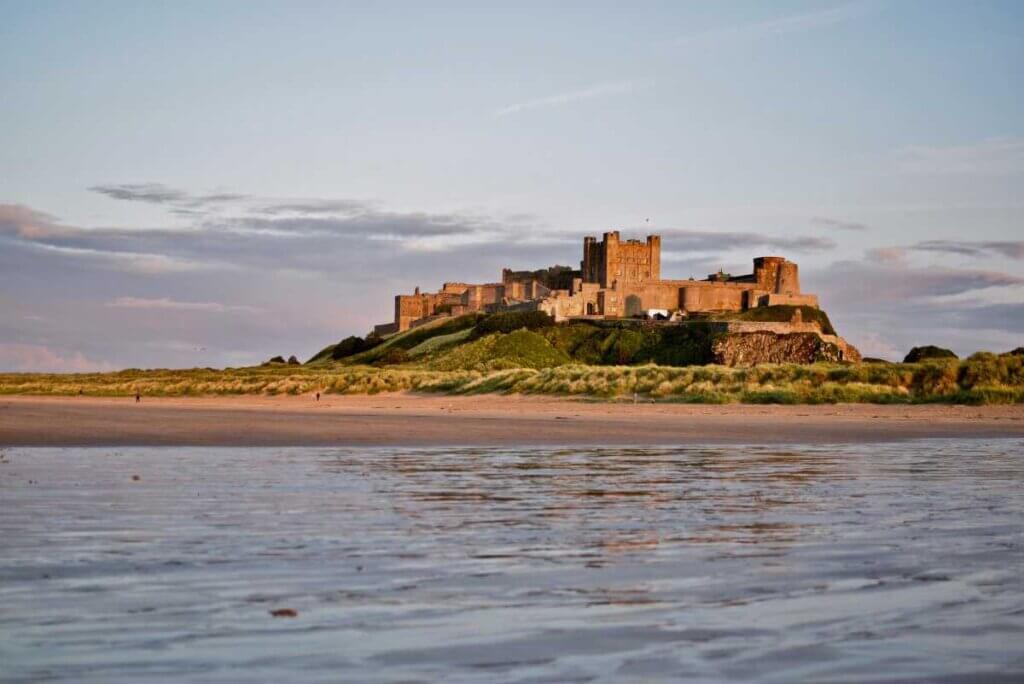
Hadrian’s Wall
One of the most famous things to see in North East England is Hadrian’s Wall; a former defensive fortification of the Roman province of Britannia, which was built around AD 122.
While the wall once ran from one side of the island of England to the other, the whole wall is no longer still standing, but there are still more than 20 sites where you can explore the sections that are still intact.
Hadrian’s Wall was built to mark the boundary between Roman Britannia and Caledonia (which is mostly Scotland) but has never actually been on the border between England and Scotland.
Visiting this UNESCO World Heritage Site is a fascinating way to learn about life in Roman Britain. There are multiple hikes you can do along sections of the wall, while different areas in the North East are home to Roman forts and garrison towns to explore. Check out the official website to decide which part (or parts) you want to see!
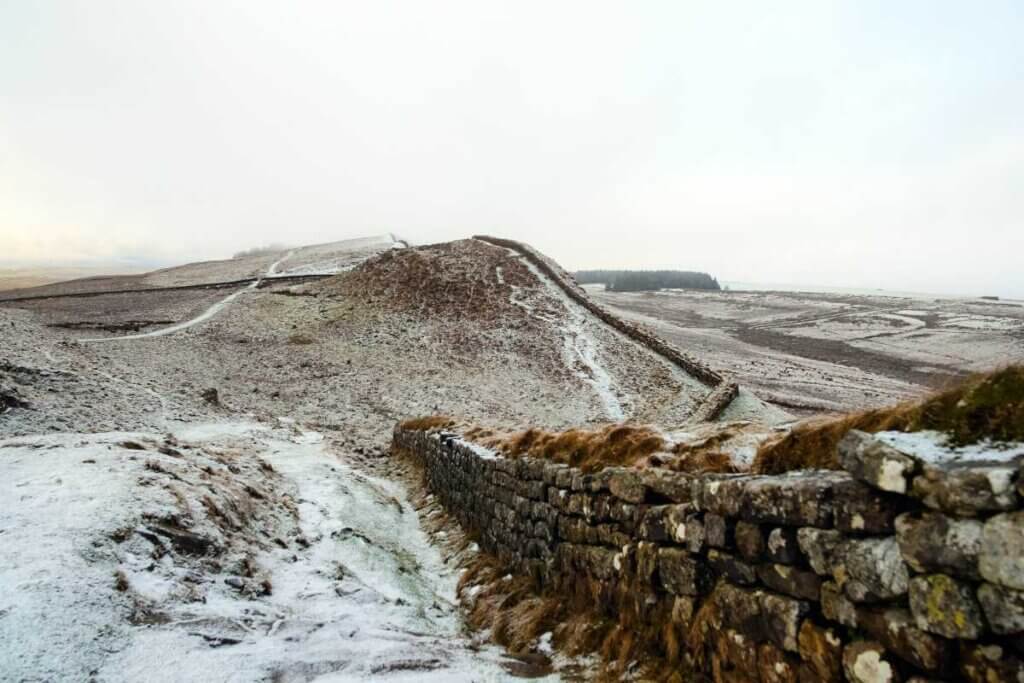
The Angel of the North
The Angel of the North is a huge sculpture by British artist Antony Gormley, located beside the A1 road in Gateshead, not far from the city of Newcastle. Widely believed to be the largest sculpture of an angel in the world, this is definitely one of the most unusual places to visit in North East England!
The angel is visible both from the nearby highway, as well as from trains traveling on the East Coast Main Line. It has also become a symbol of the North East of England, so it’s definitely a must-see.
There’s a dedicated car park if you want to get up close and personal to the 20 metre tall figure, with a wingspan of 54 meters across. Touching and sitting on the feet of the angel is also actively encouraged!
Newcastle upon Tyne
As the largest city in North East England, it stands to reason that there is plenty to discover in Newcastle-upon-Tyne. If you’ve ever heard the old English idiom of “selling coals to Newcastle” (which means a pointless action), this is the Newcastle from the saying as it was once one of the biggest exporters of coal in the country.
Located on the banks of the River Tyne, and close to the coast, Newcastle has always been a shipping hub, but has also become renowned for its nightlife in more recent years.
People from in and around the city are known as Geordie (sounds like jawr-dee), due to their dialect. The reality show Geordie Shore is set in Newcastle, while British television presenters Ant and Dec are also from Newcastle.
Must-see sights in Newcastle-upon-Tyne include the Gateshead Millennium Bridge (pictured below), the Sage Gateshead music venue (also below), BALTIC Centre for Contemporary Art, Newcastle castle, the Victoria Tunnel and Earl Grey Monument.
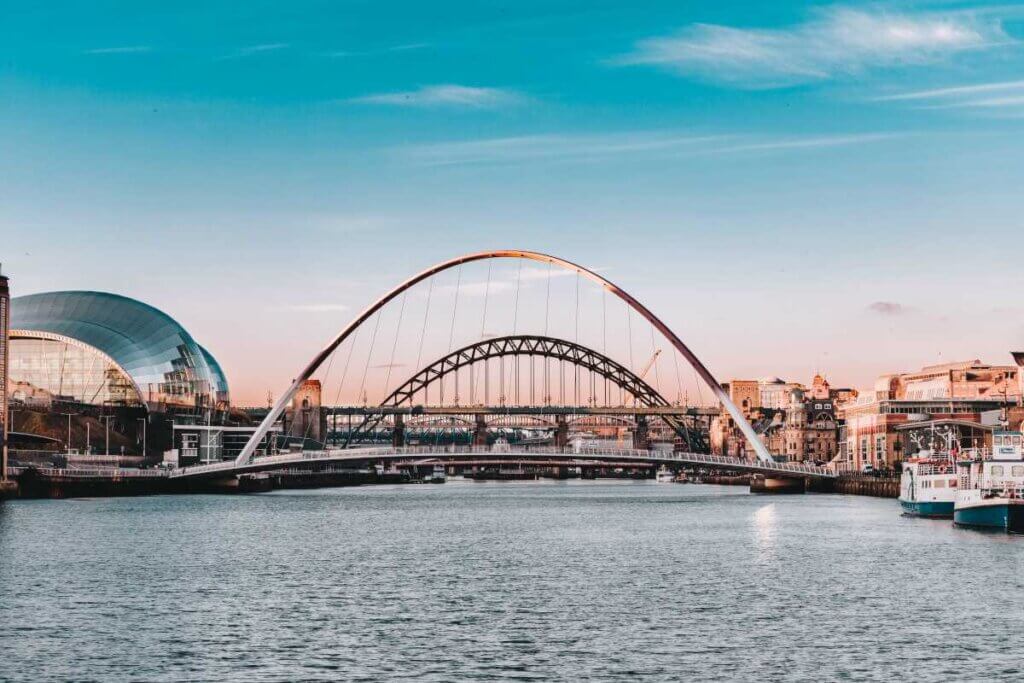
Beamish Museum
Located in the town of Beamish, south of Newcastle, is the open-air Beamish Museum. This is a really cool and immersive attraction where you can experience what life was like in the region during Georgian, Victorian, Edwardian, war time and fifties Britain.
The Beamish Museum is situated on 350 acres, with a town representing 1913, a Georgian landscape based around a farm, a 1940s farm and a 1950s town. Within these separate sections there are so many shops and displays to take you back in time, as well as staff members dressed in period costumes!
Visitors can ride old trams, buses and trains between the different parts of the museum, as well as getting the chance to taste delicious treats from the past. From a “chippy” to a bakery, pub or old-fashioned lolly shop, the Beamish Museum is truly a delight for young and old.
PRACTICAL INFORMATION FOR VISITING: The Beamish Museum has different opening times during the year (sometimes open daily, sometimes only on weekends and sometimes closed on Monday and Tuesday) plus it’s closed over winter, so make sure you check well ahead of time if it will be open when you are in the area. You also need to pre-book your visiting timeslot, even if you have an unlimited pass.
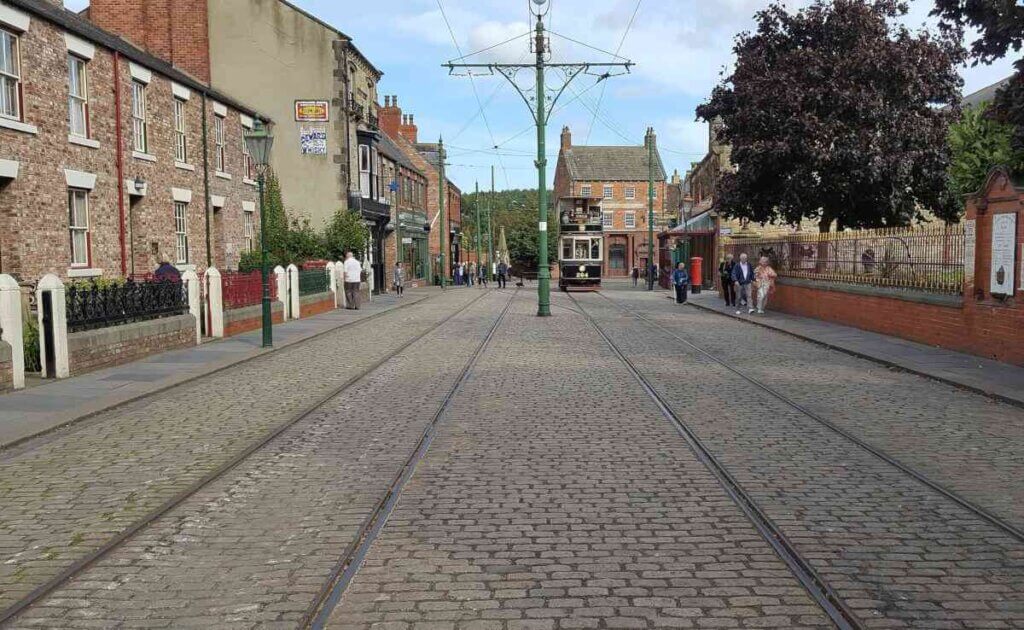
Lindisfarne
Also simply called the Holy Island, Lindisfarne is a small tidal island located close to Bamburgh Castle. The island has had a religious history since the 6th century AD, being an important site for Celtic Christianity and is still home to an ancient priory. There is also a castle and quite a few pubs and cafés, as it’s a popular North East England destination.
Visitors can drive across the causeway to the island, or walk along the ancient pilgrim’s path. Twice a day the island is completely cut off by high tide, so you do need to check tidal times and be careful!
Staying overnight is a lovely way to experience the tranquillity of the island once it’s cut off from the mainland, and the day trippers have gone away. Lindisfarne is also famous for the mead that was originally made by the monks in the priory. Nowadays you can try the same mead (made with the secret recipe) at St. Aidan’s Winery on the island.
The island is also surrounded by the 8,750-acre Lindisfarne National Nature Reserve, which attracts hundreds of different bird species to the area, making Lindisfarne very popular for bird-watchers as well.

The Farne Islands
The Farne Islands are a small cluster of between 15 and 20 islands (depending on the tide) located off the coast of Northumbria near the town of Seahouses. Legendary biologist Sir David Attenborough even declared them his favorite spot to see nature in the UK!
While humans have lived on the islands in the past, nowadays only National Trust assistant rangers stay there for part of the year, but visitors can enjoy regular boat trips from Seahouses to see the abundance of wildlife that lives in and around the islands.
During the summer months you can expect to spot dolphins, seals and puffins, along with many other bird species during a boat trip, plus you can also explore three of the islands by land if you book the right tour.

Tynemouth
While Newcastle-upon-Tyne sits on the Tyne River, Tynemouth (not surprisingly) is located at the river mouth. Tynemouth is very popular with locals from the region as well as tourists, since it boasts beautiful beaches that have been fashionable for bathing since the late 18th century.
Even when it’s too cold for swimming, there are plenty of stunning coastal walks to enjoy, especially the 810-metre pier which leads to the Tynemouth Lighthouse. The ruins of Tynemouth Priory and Castle dominate the headland of the town, and are over 2,000 years old.
Tynemouth is a fabulous spot for a day trip or short stay, especially if you enjoy beaches, surfing and delicious seafood! There’s an excellent market held on Saturdays, while the yearly events the Mouth of the Tyne Festival and the Tynemouth Food Festival are both worth timing your trip to experience.
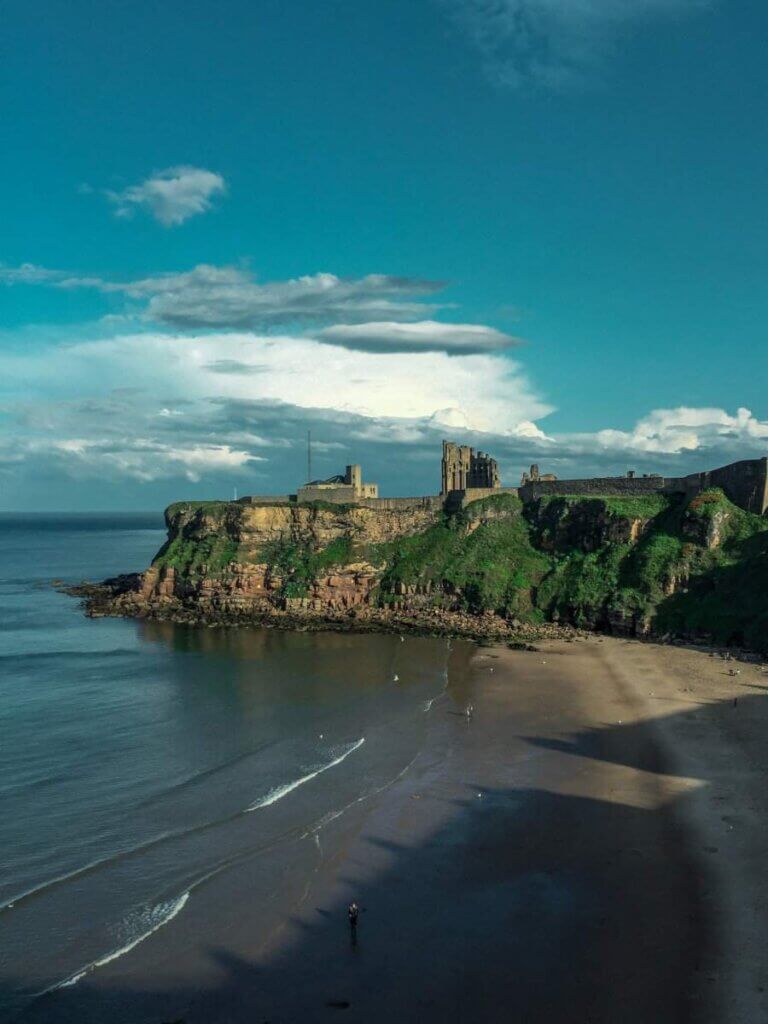
Berwick-upon-Tweed
Berwick-upon-Tweed is the northernmost town in England, as it sits just 4 kilometres under the border to Scotland. It’s a traditional market town that also retains medieval town walls, a Georgian Town Hall, Elizabethan ramparts, and Britain’s earliest barracks buildings.
The town is also famous for the fact that many residents don’t really agree on whether they are English or Scottish, since the town exchanged hands so many times during the 400 year border wars.
The Royal Border Bridge (pictured below) is a Grade I listed railway viaduct that enters the town after crossing over the River Tweed. It doesn’t actually cross the border between England and Scotland (since that’s further north) but is worth a visit if you’re in Berwick-upon-Tweed to see all 28 stunning arches.
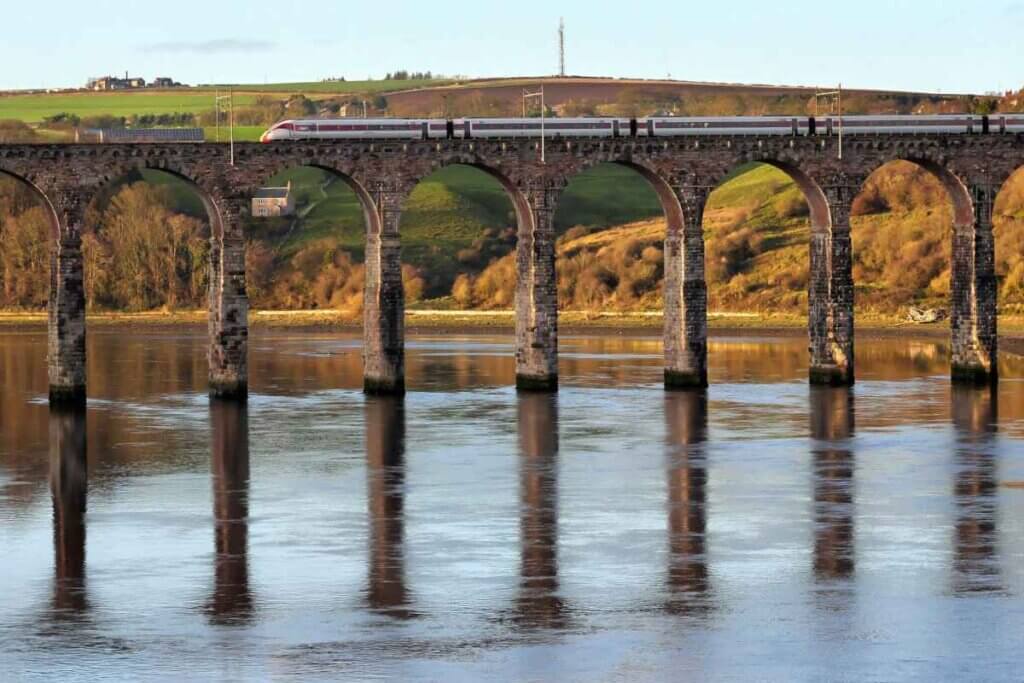
Have we missed any of your favourite places to visit in North East England?
Let us know in the comments!
